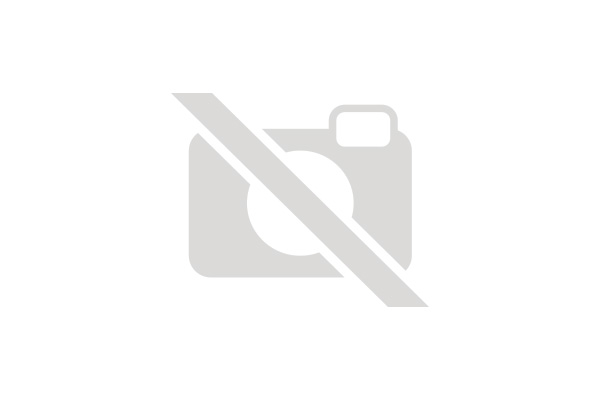
 Ken Brubaker
Senior Editor, Four Wheeler
Ken Brubaker
Senior Editor, Four Wheeler
The staff of Four Wheeler was having a feeding frenzy at a restaurant recently and not paying attention to the background music until a song from the ’80s started playing. We dug the song, but we drew a blank on the artist and song title. Tech Editor Holman jumped up from the table, ran over to the speaker, and used an app on his smartphone that instantly identified the song, which solved a major crisis for the Four Wheeler staff.
It’s too bad there’s no app to identify axle problems. It would be cool if we could simply point our smartphone at our axle and the device would immediately tell us what that funky noise is and how we can fix it. The news may not be pleasant, but it would be helpful. The reality, however, is that it’s all on us to figure it out, and sometimes determining what’s wrong with an axle without unbuttoning it can be tricky. Some problems are easy to figure out, while others are not. Of your five senses it’s going to take hearing (listening for weird noises and where they’re coming from), touch (to analyze vibrations), and sight (to look for anomalies) to figure out what’s up. You can utilize your other two senses, taste and smell, for those dry-rub ribs at dinner.
To help you identify axle problems and determine a course of action, we’ve compiled a list of common issues, what may be causing them, and how to fix ’em. We were assisted with this story by Jeremy Naeger, whom you may remember as a past Top Truck Challenge Champion. What you may not know is that Naeger is the owner of Custom Differentials in Bloomsdale, Missouri, hence he is elbow-deep in axle tech every day. Custom Diff has been in business for 19 years and the company does everything from repairs to custom heavy-duty axle builds.
Hopefully this info will help you find and solve axle problems quickly so you can spend more time wheeling.
Chatterbox
Problem: Fast-paced clicking that turns to chatter as speed increases, or a clunking noise from the driveline.

Cause: Worn driveshaft constant-velocity (CV) joint.
Fix: Replace the CV joint. If you’re really cheap and the CV joint isn’t destroyed or damaged beyond repair, kits are available to rebuild it. It’s important to identify and fix the problem early because a worn CV joint could blow apart and take out other items, or the driveshaft could fall out of the vehicle. The worst-case scenario is if the driveshaft fails at speed or under heavy load.
Squeaking By
Problem: Fast-paced clicking, squeaking, or vibration at slow speed, or a clunking noise from the driveline.
Cause: Worn, damaged, or ungreased U-joint.
Fix: Lube the U-joint or, if it’s worn or damaged, replace it. As with a CV joint, fixing the problem early is important because a worn or ungreased U-joint can fail and the result can be damage to other components or the driveshaft could fall out of the vehicle. If the U-joint fails at speed or heavy load, collateral damage could be significant.
Very Whirried
Problem: Whirring that increases with speed.

Cause: Pinion bearings.
Fix: Pinion bearings spin faster than carrier bearings or axleshaft bearings, so this noise is typically easy to decipher. Custom Differentials says it’s not the highest-pitch whine from an axle; that’s normally the gearset. You may be able to just replace the pinion bearings if the pinion hasn’t loosened. If the pinion has loosened the gear pattern will be off and you’ll need a new ring-and-pinion along with a total rebuild of the axle.
Things That Go Clunk
Problem: Excessive clunking from the axle (not driveline) when on and off the gas.
Cause: Many causes, including worn differential carrier bearings or pinion bearings, broken or worn differential (spider) gears, a loose pinion nut, improperly adjusted backlash, or an automatic locker installed in the axle.
Fix: The best course of action here is to inspect your axle starting with the item easiest to access. Use the process of elimination.
Tooth Fairy
Problem: Clunking, banging, and jerking of vehicle as you pull forward slowly.

Cause: Tooth or teeth broken from the ring or pinion gear.
Fix: When teeth fail on a ring or pinion gear, the metal often circulates through the axle, causing significant damage. Often the metal takes out the bearings and even the carrier. The fix here is to rebuild the axle when you’re replacing the ring-and-pinion. One way to keep from breaking gear teeth is to install a reinforced diff cover or one that has bearing cap support studs to keep the carrier bearing caps from distorting under load.
Metallic Noises
Problem: Metallic squealing or squeaking.

Cause: Typically brake-related.
Fix: Check to make sure there’s not a stone wedged between the brake pad and rotor or that the brake dust shield has become bent and is touching the rotor. Also make sure your brake caliper is releasing completely. On some axles with internal parking brakes, like the Ford 8.8- and 101⁄2-inch, you need to make sure the shoes are releasing completely and the unit isn’t clogged with debris.
Belly Growl
Problem: Low-pitched growl emitting from the axle at speed. It can sound like tire drone, and you may not notice it at low speeds. Sometimes accompanied by vibration.

Cause: Axleshaft bearing or differential carrier bearing.
Fix: If it’s an axleshaft bearing you may notice the seal leaking beside the bearing due to axleshaft scoring, and you may have diff oil on your brake pads. You need to replace the axleshaft bearing, seal, and possibly the axleshaft. If it’s a carrier bearing it typically requires a total axle rebuild because metal shavings have probably damaged other components in the differential. However, in rare cases if it’s caught early you may get by with just replacing the carrier bearings. Rule of thumb: If the carrier is loose, the axle will probably need to be rebuilt.
Wheel Wobble
Problem: Slower-paced vibration at speed.
Cause: Loose lug nuts or bent axle.
Fix:
Cause: Limited-slip differential failure.
Fix: Depending on the type, the diff may have seized or have broken clutches, or it may not have the proper additive that many limited-slip diffs require. The fix is to rebuild or replace the limited-slip unit and include the proper additive if required. There may be collateral damage to other components due to metal in the axle, which may necessitate a complete rebuild of the axle.
Whoa, That’s Twisted!
Problem: Can’t remove axleshafts from carrier.

Cause: Axleshaft splines may be twisted.
Fix: You may not even know your axleshaft splines are bent until you try to remove the axleshaft and it won’t release from the carrier. C-clip axles with twisted splines also pose a problem because they first have to be pushed inward to remove the C-clips, and if the splines are bent they may not want to move. To remove the axleshafts you may be able to pound them with a mallet, or you’ll have to torch ’em out. Typically you can reuse the carrier, but the internals (spider gears and sidegear) will have to be replaced. It is also worth noting that axleshafts can crack lengthwise or splinter, which can cause them to be stuck in the carrier or destroy the carrier.
Where To Get Parts
After you’ve determined what’s wrong with your rig’s axle you’ll need parts to fix it, and if you’re like us you’ll want those parts fast and with no hassle. The following companies are all great sources for axle parts, and most stock a huge variety so they can get ’em out to you quick.
4Wheel Parts, www.4wheelparts.com
4x4 Parts.com, www.4x4parts.com
Complete Off Road, www.completeoffroad.com
Dick’s Driveshaft, www.dicksdriveshaftphoenix.com
Just Differentials, www.justdifferentials.com
Motive Gear, www.motivegear.com
Quality Gear, www.qualitygear.com
Randy’s Ring & Pinion, www.ringpinion.com
Summit Racing Equipment, www.summitracing.com
Superior Axle & Gear, www.superioraxlegear.com
West Coast Differentials, www.differentials.com
Axle Glossary
If you’re new to the world of axle guts here’s an overview of the major parts.
Axleshaft: Part of the axle assembly that is turned by the differential side gear and transfers power to the wheel.
Carrier: This mechanism transfers motion from the ring gear to the axleshafts.
Carrier bearings: These are the bearings that the carrier rides on.
C-clip: On some semifloat axles this clip retains the axleshaft in the carrier.
Cross-shaft: A hardened pin that transfers a load from the carrier to the spider gear assembly.
Crush sleeve: Collapsible spacer placed on the pinion to preload the pinion bearings.
Housing: Holds all of the internal differential components and the axleshafts.
Pinion bearings: The bearings that the pinion rides on.
Pinion shaft: A shaft with a small gear that is connected to the driveshaft and meshes with the ring gear.
Ring gear: Bolts to the carrier and is driven by the pinion gear.
Side gear: These fit into the carrier and have internal splines that accept the axleshaft splines.
Spider gear: Also known as differential gears, these install into the carrier and allow one wheel to spin faster than the other.